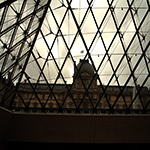Euroacademia Conferences
 Europe Inside-Out: Europe and Europeanness Exposed to Plural Observers (9th Edition) April 24 - 25, 2020
Europe Inside-Out: Europe and Europeanness Exposed to Plural Observers (9th Edition) April 24 - 25, 2020 Identities and Identifications: Politicized Uses of Collective Identities (9th Edition) June 12 - 13, 2020
Identities and Identifications: Politicized Uses of Collective Identities (9th Edition) June 12 - 13, 2020 8th Forum of Critical Studies: Asking Big Questions Again January 24 - 25, 2020
8th Forum of Critical Studies: Asking Big Questions Again January 24 - 25, 2020 Re-Inventing Eastern Europe (7th Edition) December 13 - 14, 2019
Re-Inventing Eastern Europe (7th Edition) December 13 - 14, 2019 The European Union and the Politicization of Europe (8th Edition) October 25 - 26, 2019
The European Union and the Politicization of Europe (8th Edition) October 25 - 26, 2019 Identities and Identifications: Politicized Uses of Collective Identities (8th Edition) June 28 - 29, 2019
Identities and Identifications: Politicized Uses of Collective Identities (8th Edition) June 28 - 29, 2019 The European Union and the Politicization of Europe (7th Edition) January 25 - 26, 2019
The European Union and the Politicization of Europe (7th Edition) January 25 - 26, 2019 7th Forum of Critical Studies: Asking Big Questions Again November 23 - 24, 2018
7th Forum of Critical Studies: Asking Big Questions Again November 23 - 24, 2018 Europe Inside-Out: Europe and Europeanness Exposed to Plural Observers (8th Edition) September 28 - 30, 2018
Europe Inside-Out: Europe and Europeanness Exposed to Plural Observers (8th Edition) September 28 - 30, 2018 Identities and Identifications: Politicized Uses of Collective Identities (7th Edition) June 14 - 15, 2018
Identities and Identifications: Politicized Uses of Collective Identities (7th Edition) June 14 - 15, 2018
Bratislava Castle and Changes to the Methodological Approach of Monument Restoration in Correlation of Modern Europe
-
-

-
Presentation speakers
- Anna Gondová, Faculty of Architecture of Slovak University of Technology in Bratislava, Slovakia
- Download presentation
Abstract:
Common roots, common history, spiritual and tangible architectural heritage is most explicitly demostrated through the legacy of the ruling elite. Bratislava Castle was considered as a provintial castle, but in a wider context was bounded with western Europe. In 18th century, castle was a seat of vicegerent of Austria – Hungarian monarchy Albert Casimir, Duke of Teschen, son – in – law of the great empress Maria Theresa. Presence of the empress in this period caused the greatest flourish of the Bratislava castle. In 1811 castle burnt down by a tragic coincidence and till the midlle of 20th century, when the large restoration began, ruins remained at the mercy of time. Lack of authentic elements and preserved interiors and exteriors as well lead to a question, how to stand up to the methodological matters of restoration of Bratislava castle, which was considered as highly important task even in a context of socialist Czechoslovakia. Task, that was supposed to represent country in the world. What kind of architectural means of expression should define the approach of young socialist nation, according to the state ideology and according to effort of presenting Slovaks as a modern european nation to the preservation of this monument? Modernism. After the Velvet Revolution, borders were opened and in 2004 Slovakia became a part of European Union. Since 2008, last restoration of Bratislava Castle has been going on, while the methodological approach is entirely different. The image of Maria Theresa´s Baroque castle is recovered. Governing representative interiors are changing from Modernistic to Rococo, while method of preservation are analogies with austrian examples. Could we consider, that one of the reasons of changing the methodology is fact, that Slovaks need no longer to define their cultural identity within specific style, but they are able to sense themselves as a part of wide European history?
-


















